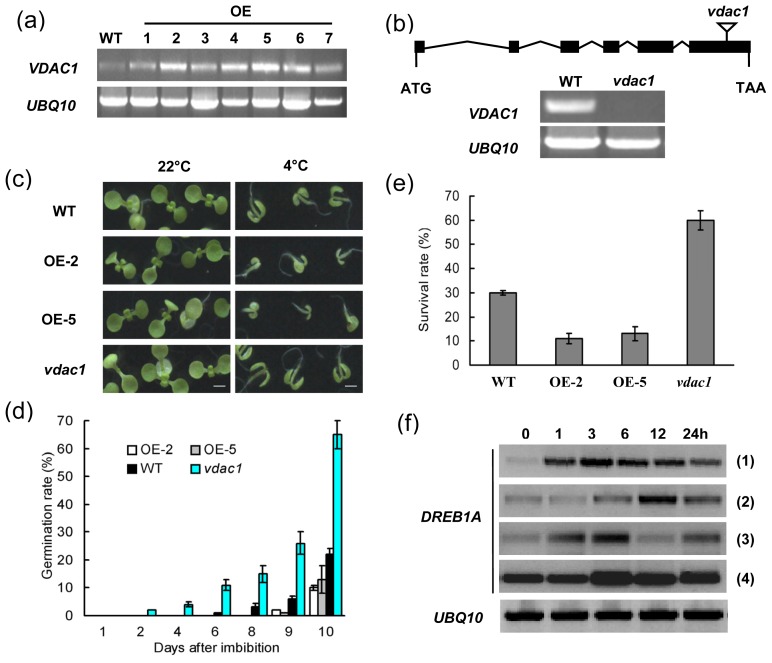Figure 2.
Involvement of VDAC1 in seed germination and cold stress response. (a) RT-PCR expression analysis of VDAC1 in different lines. Transcripts of VDAC1 in wild-type (WT) and transgenic Arabidopsis lines (OE-1 to 7) were detected using semi-quantitative RT-PCR with 23 and 26 reaction cycles for VDAC1 and UBQ10, respectively. (b) VDAC1 gene structure and RT-PCR analysis of the WT and vdac1 mutant. Introns are shown as lines, and exons are shown as black boxes. The triangle indicates the location of the T-DNA insertion site in vdac1. The numbers of semi-quantitative RT-PCR reaction cycles for VDAC1 and UBQ10 were 26. (c) Representative images of different phenotypes at day 15 after imbibition at (22 °C) or 4 °C. Bars = 2 mm. (d) Seed germination frequencies in WT, vdac1 mutant and transgenic plants (OE-2 and OE-5) at 4 °C. Data points represent the mean ± SE of three independent biological determinations. (e) Survival rates after cold stress. Survival rates were calculated 48 h after re-watering. Data represent means ± SD (n = 20). (f) Semi-quantitative RT-PCR expression analysis of cold-responsive DREB1A gene with gene specific primers: 5′-TCTCTGAACCAGAGTCGTTT-3′ (forward) and 5′-CTTCTTCTCACCGTCTTCAC-3′ (reverse) in WT (1), transgenics (2 and 3) and vdac1 mutant (4) plants induced by cold stress. Similar results were obtained in at least three biological replicates. The UBQ10 gene was amplified as an internal control.

